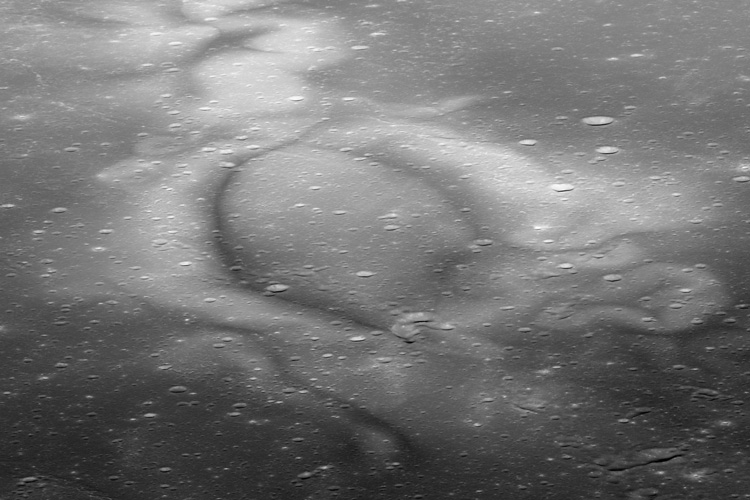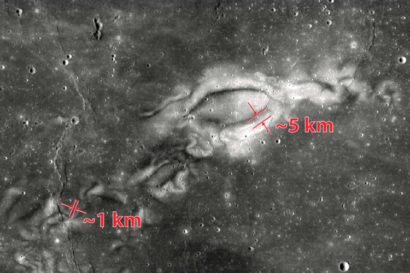Enigmatic ‘lunar swirls’ linked to moon’s volcanic past
A unique feature of the moon may be the result of underground magnetized lava flows created 3 billion years ago

September 7, 2018
Lunar swirls, beautiful features of the moon that are found on no other body in the solar system, may be caused by the interaction some 3 billion years ago between erupting lava and the moon’s strong magnetic field.
The new theory of how these swirls formed, which gives clues about the moon’s thermal and magnetic history, comes from a collaboration between Douglas Hemingway, a Miller postdoctoral fellow at UC Berkeley, and Sonia Tikoo, a professor of planetary science at Rutgers University in New Brunswick, New Jersey. Their results were published this week in the Journal of Geophysical Research.
The swirls, a popular telescope target of amateur astronomers, are bright, cloud-like patches that snake across portions of the moon’s surface. The most famous, called Reiner Gamma, is about 40 miles long.
Lunar swirls are located in areas with powerful, localized magnetic fields, as discovered by moon-orbiting satellites like Lunar Prospector, which carried sensitive magnetometers to chart the surface magnetic fields remaining today. This association suggests that the bright-and-dark patterns may result when those strong magnetic fields deflect particles from the solar wind and cause some parts of the lunar surface to weather more slowly than others.

A Wide Field Camera view of Reiner Gamma, also taken from the Lunar Reconnaissance Orbiter, shows alternating bands of bright lobes and dark lanes that vary from 1 to 5 kilometers in scale. (NASA image)
Hemingway and Tikoo worked with what is known about the intricate geometry of lunar swirls and the strengths of associated magnetic fields, and developed mathematical models for what underground geologic structures might be generating the magnetic fields.
The models told them that each swirl must stand above a magnetic object that is narrow and buried close to the moon’s surface. This picture is consistent with lava tubes – long, narrow structures formed by flowing lava during volcanic eruptions – or with lava dikes, which are vertical sheets of magma injected into the crust.
“The magnetic sources must be narrow and shallow, suggesting something like dikes or lava tubes, and much more strongly magnetized than any rocks in the Apollo sample record,” Hemingway said. “This suggests that in the past there was some process that enhanced the magnetism of the lava, which we argue could have occurred from prolonged heating in the presence of an ancient ambient magnetic field.”
A key insight of the work is that moon rocks can become highly magnetic when heated more than 600 degrees Celsius in an oxygen-free environment, something that doesn’t happen on the oxygen-filled Earth.
Recent research by Tikoo showed that the moon’s magnetic field persisted much longer than people thought after its birth 4.5 billion years ago, overlapping with a period of major volcanic activity about 3 billion years ago. Thus, the moon’s own planetwide magnetic field, long since disappeared, would have been strong enough to magnetize the solidifying lava, leaving behind underground “magnets” that created the swirls.
“No one had thought about this reaction in terms of explaining these unusually strong magnetic features on the moon,” Tikoo said. “This was the final piece in the puzzle of understanding the magnetism that underlies these lunar swirls.”